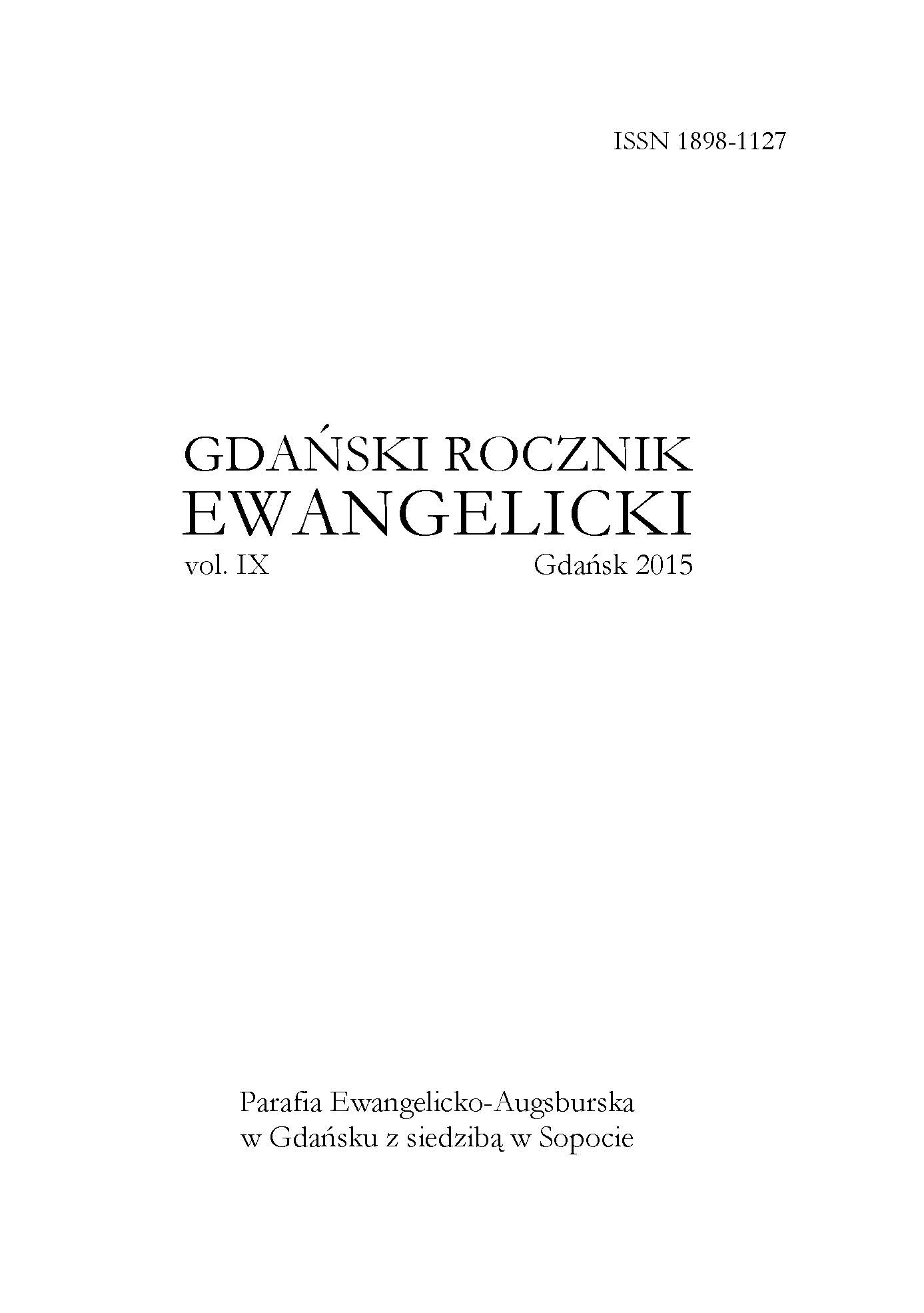Pomnik upamiętniający Annę z Leszczyńskich Potocką w kościele Wniebowzięcia Najświętszej Marii Panny w Toruniu
The monument to Anna Potocka née Leszczyńska in the
Saint Mary’s Assumption Church in Toruń
Author(s): Alicja Saar-KozłowskaSubject(s): Christian Theology and Religion, History, Theology and Religion
Published by: Parafia Ewangelicko-Augsburska (Luterańska) w Gdańsku-Sopocie
Keywords: Anna Potocka Leszczyńska; protestants in Poland; Calvinism;Saint Mary’s Assumption Church in Toruń; Polish sepulchral art; inscription epitaphs; symbolic architecture; baroque pompa funebris / baroqu
Summary/Abstract: Regarding its size, references to the royal headstone of Anna Vasa of Sweden and the person’s rank, the monument to Anna Potocka née Leszczyńska (1615-1653) is one of the greatest sepulchral artworks in the Saint Mary’s Church in Toruń. It was created after 1653 and funded by the deceased’s husband, Jan Teodor Potocki. Potocka descended from a religiously diverse family. Her father converted to Catholicism. Potocka was raised in her mother’s faith and was considered a zealous Calvinist. Her family held great offices in Respublica Poloniae both in catholic and protestant communities. Her grandfather Rafał Leszczyński (ca. 1526-1593) was one of the most active supporters of the Reformation. Her father’s nephew Rafał Leszczyński (1597-1636) was a leader of Protestants called “a Calvinist pope in Poland”. Potocka deceased in Łowicz; however, her body was buried in Toruń due to her faith and the rank of the church, which was used by the Lutherans in the years 1557-1724 and during the Counter-Reformation it was a refuge to Protestants living in the southern part of Royal Prussia. In 16th and 17th century, Toruń, along with Gdańsk and Elbląg, was one of the most prestigious centres of Protestantism in Poland. It is probable that the heroine’s funeral ceremonies were modelled on the Anna Vasa’s funeral (1636) at which both Potocki and Leszczyński families were present. The monument to Potocka is located at the wall closing the fourth yoke of the nave, counting from the East. It consists of a portal frame with Leszczyński and Potocki’s family coats of arms. Under its semi-circular arcade, there is an inscription board with the family’s genealogy, Potocka’s characteristics and the name of the founder. The Potocka’s monument fits into the category of inscription epitaphs associated with the portal. It integrates two functions: commemoration and glorification. The latter is expressed by the portal as a door: a motive of symbolic passage into another reality, or as a triumphal arch, an element of exaltation, similarly to the arcade and columns. The monument was made of limestone of Dębnik and alabaster, artificial stone, lime mortar imitating the black marble and alabaster. In 2009, it was restored back to its former splendour. No documentation of the former repair works have been preserved. As a result of unprofessional restoration, the object’s plastic and aesthetical qualities changed entirely. Before the recent restoration, gold plating and fragments of polychromy were visible, which provided the basis for their reconstruction.
Journal: Gdański Rocznik Ewangelicki
- Issue Year: 2015
- Issue No: 9
- Page Range: 38-61
- Page Count: 24
- Language: Polish

